Thankfully, I don’t have diabetes. But over the past few months, I’ve been wearing a continuous blood glucose monitor (CGM) to learn more about my metabolic fitness and metabolic flexibility.
Note: Most states require a prescription in order to buy a CGM. That’s why I signed up with Levels Health, who takes care of all the required paperwork.
I’ve realized that optimizing my metabolism can help me to:
- Improve my overall health and well-being.
- Support my immune system.
- Increase my performance as an athlete.
- Help me maintain or reduce body fat.
In this article, I’ll share what I’ve learned over the course of this experiment, including what led me to the conclusion that everybody would benefit from wearing a continuous blood glucose monitor for a few weeks — regardless of what diet they’re following.
What Is Metabolic Fitness?
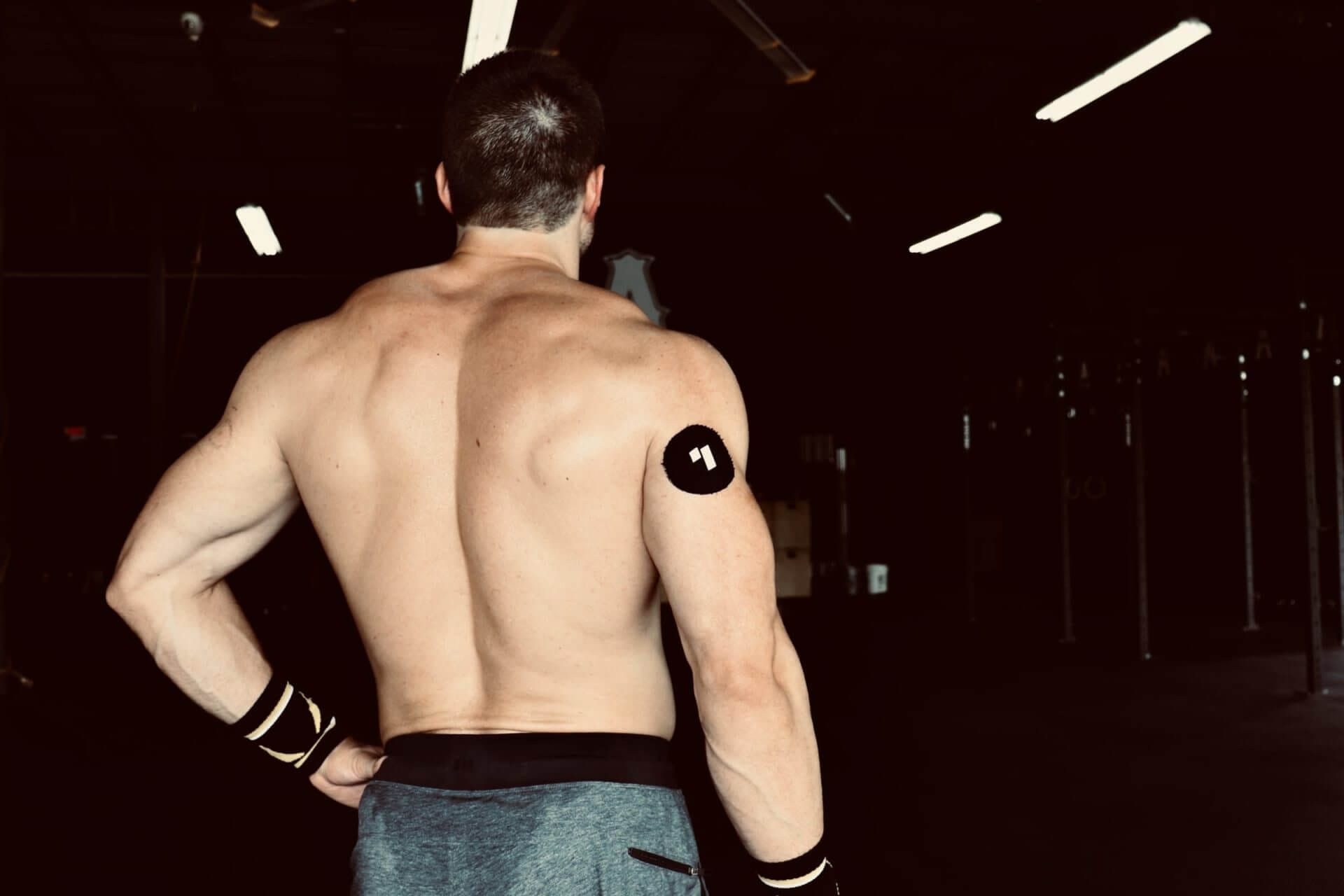
Metabolic fitness is an indication of how well your body’s cellular energy production engine is working to convert the food you eat into the energy it can expend. If you’re metabolically fit, you feel energetic, can easily maintain a healthy weight, and have a low risk of developing a metabolic disease like diabetes, cancer, cardiovascular disease, Alzheimer’s or others.
Considering the number of people in the United States who are overweight or obese and the rates of chronic diseases, it’s safe to say that most Americans are metabolically unfit.
As a result, there is significant opportunity in this country to improve metabolic fitness, reshape how people age and reduce the burden on our taxed healthcare systems.
Based on everything I know, there are two contributing factors that wreak havoc on human metabolism:
- Excess carbohydrate intake (and processed carbs in particular).
- The skyrocketing consumption of industrial seed oils (aka vegetable oils).
In this article, we’ll focus on the connection between the foods we eat, our blood sugar, and our metabolic fitness and flexibility.
Most people probably know that eating simple carbs causes blood glucose levels to go up. Unfortunately, knowing that fact usually isn’t enough for people to change their dietary habits.
However, I believe that visualizing blood sugar levels over longer periods, and making the impact of the food we eat crystal clear, is much more impactful and might nudge some people to improve how they eat.
That’s where a continuous glucose monitor can help.
Learn more: Here’s a more detailed explanation of what it means to be metabolically healthy.
What Is Metabolic Flexibility (And Why Is It Important?)
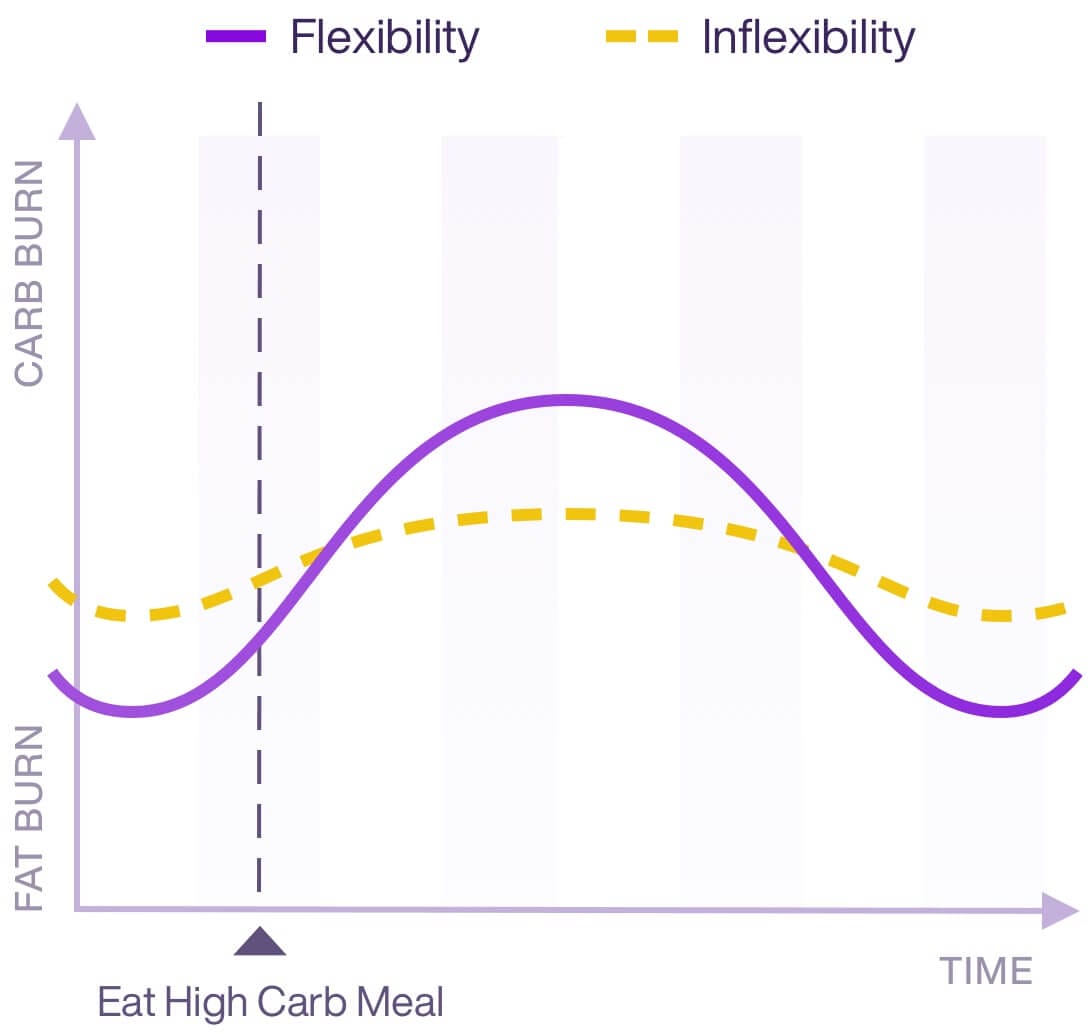
As I discussed in my video about “kids on keto” and my Lumen metabolic breath analyzer review, metabolic flexibility describes the body’s ability to efficiently switch back and forth between using glucose (carbs) and ketones (fat) for fuel.
Humans have been metabolically flexible throughout evolution. In fact, without such flexibility, we wouldn’t have survived.
Think about it! Our Paleolithic ancestors didn’t always have access to food. If they didn’t catch an animal or find wild fruits, seeds or veggies, they had to get their energy from stored body fat.
That means that the human body is genetically programmed to function as a walking pantry, allowing the liver to convert excess energy into fat and store it on the body for when there is no food available.
The ability to access stored body fat means that metabolically healthy humans can go a long time without requiring food, without feeling “hangry,” and without suffering from any of the traditional symptoms of “low” blood sugar.
Unfortunately, thanks to modern diets that are high in (processed) carbs and industrial seed oils, most of us have lost that ability.
Just think about what happens when you have to skip a meal. Chances are, you get irritated and lack the energy to be productive. Those are signs of low blood sugar, and are caused by your brain demanding energy that your body can’t deliver because it has lost its ability to access your fat stores.
Instead, it demands more sugar because carbs are the only macronutrient it knows how to convert into energy.
The problem is that carbs burn quickly, so you require a constant supply of them, in the form of frequent meals and snacks in between. In a way, it causes your life to revolve around preset meal times and the constant need for snacks, because skipping even just a single meal means that your body won’t be able to function optimally.
That constant (over)supply of carbs leads to an overtaxed pancreas (the organ that releases insulin to remove all that sugar from the bloodstream), cells that become less sensitive to insulin (because of consistently high insulin levels), and an increase in body fat caused by the liver converting excess glucose into triglycerides and storing them in your fat tissue.
That’s a vicious cycle and one of the two major factors (vegetable oil consumption being the other) that contributes to the ridiculously high rates of metabolic disease and obesity in many countries around the world.
How Continuous Glucose Monitors Can Help
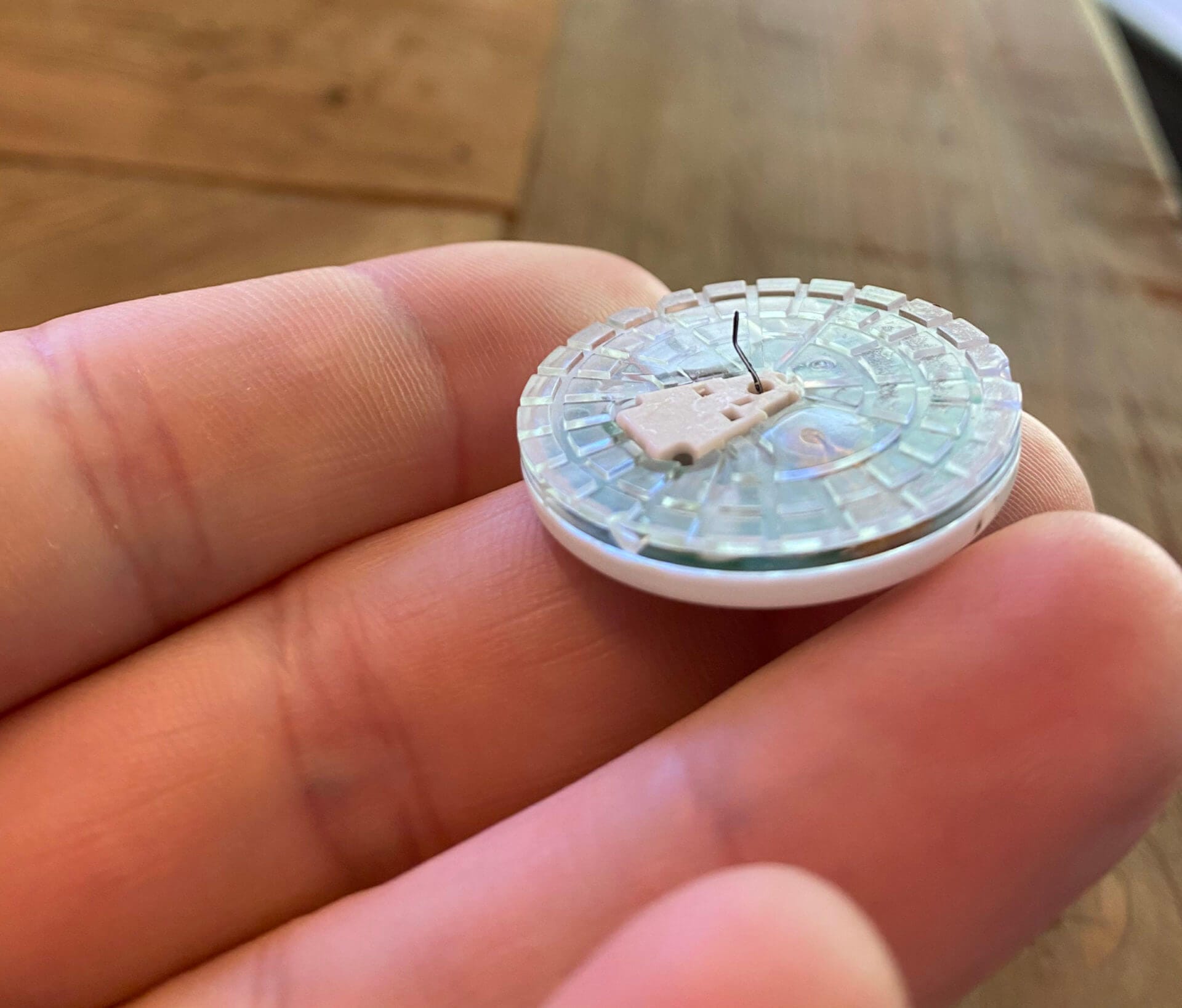
A continuous blood glucose monitor, or a CGM, is a device that you attach to your upper arm or abdomen. Once in place, it continuously measures your blood sugar levels. The two most popular CGMs on the market today are the FreeStyle Libre and the Dexcom.
Technically, a CGM consists of a tiny probe (a filament) that penetrates the skin, a sensor that interprets the data, and an app that permanently records and visualizes the readings.
Now, when I say “penetrates the skin,” don’t be alarmed! The device uses a tiny filament that’s only 0.4 millimeters thick and just long enough to reach the interstitial fluid underneath your skin. It doesn’t hurt to put in our take out, and once there, you’ll forget about it instantly.
One of the clear advantages of using a CGM is that you don’t have to stick a needle into your finger every couple of hours, thus reducing both the soreness of your fingers and medical waste from all the spent needles and test strips.
That’s because once you attach the sensor to your skin, it continuously records your glucose levels and temporarily stores the captured data inside the sensor for up to eight hours. That means you only have to wirelessly transfer the data from the sensor to your smartphone every eight hours to get a 24/7 picture of your blood sugar levels.
If you combine that with an app like the one from Levels Health or NutriSense, you can easily see how your lifestyle choices, including physical activity and the food you eat, impact your blood sugar. And you can then begin to analyze what that means for your metabolic fitness.
How I Conducted the Experiment

To find out how certain foods and beverages would impact my blood sugar levels, I could have simply used my Keto-Mojo blood glucose monitor and taken a few blood tests (30, 60 and 90 minutes after consumption).
I did that a few months ago when I wanted to find out what snack bar would have the least impact on my ketone and glucose levels.
While using the finger-prick method for a single meal is feasible, it becomes incredibly cumbersome and painful doing it for multiple meals and days in a row. Just the thought of having to go through that makes you appreciate what people who have Type 2 diabetes have to deal with every day.
So to make this experiment as convenient as possible, I decided to go with a continuous blood glucose monitor.
I had used the Freestyle Libre from Abbott in the past, but I realized that the app was clunky and limited. For example, you can’t easily scrub through a timeline to see your blood sugar levels over multiple days, or add meals or workouts. Plus, the app doesn’t translate your readings into a metabolic fitness score.
That’s why I decided to sign up with Levels Health, a data science company. While Levels relies on a third-party CGM sensor, they provide their own app to collect, visualize and interpret the data.
Additionally, Levels handled all the paperwork to get the necessary prescription for the CGM, so I didn’t have to convince my primary care physician to hook me up again.
As a result, all I had to do over the past few weeks was follow my regular diet and exercise regimen, and snap pictures of the meals I ate. Every six to eight hours, I would tap my iPhone on the CGM sensor to wirelessly transfer the cached readings.
What’s great about the Levels Health app is that it’s smart enough to use the timestamp of the meal photos to automatically correlate them with potential changes in my blood glucose levels.
Additionally, the app integrates with Apple’s HealthKit to automatically import all workout activities that I had recorded using my Apple Watch.
What I Learned About My Metabolic Fitness
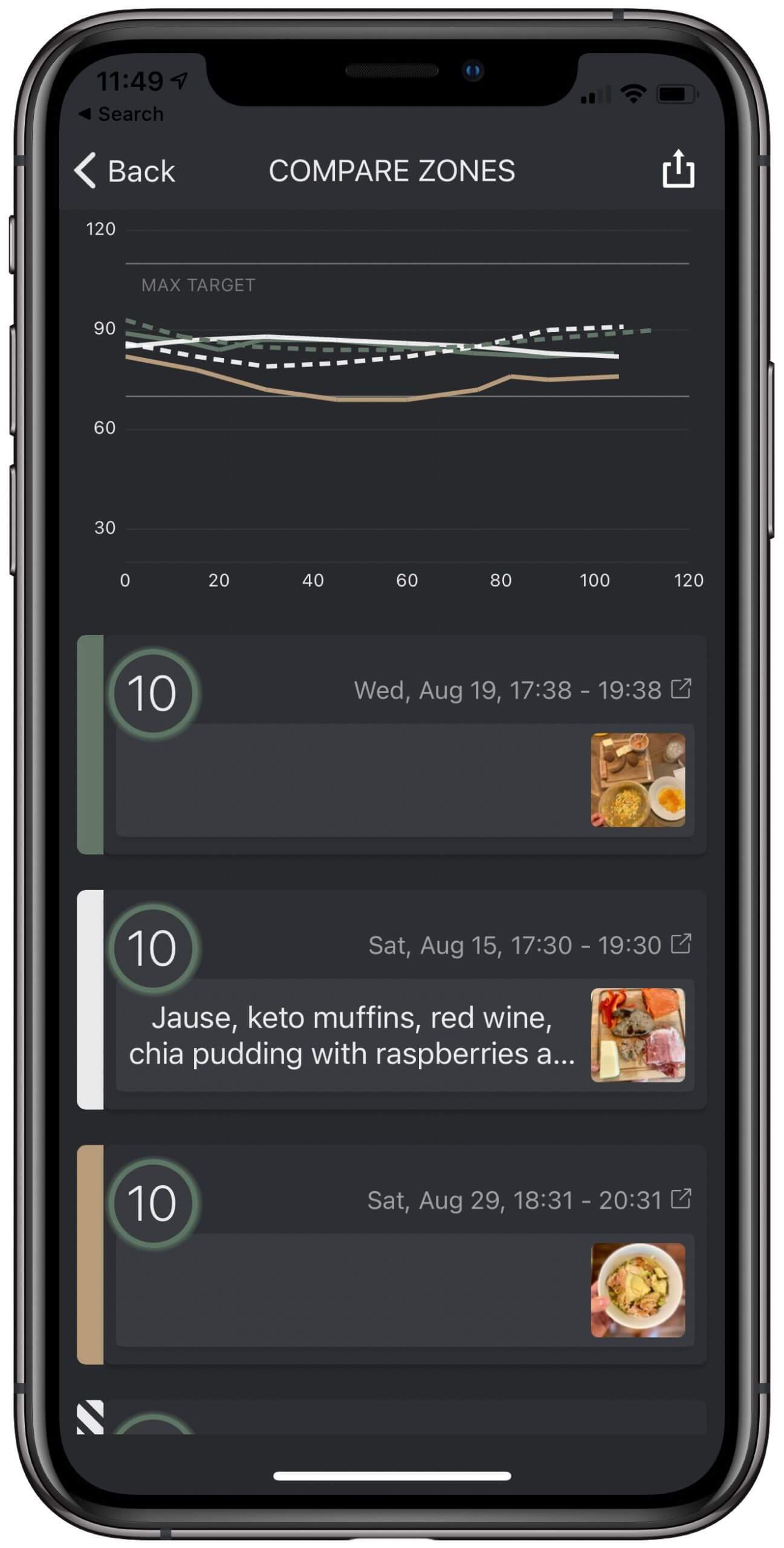
As I mentioned in the introduction, I’m not diabetic and I generally don’t have issues managing my carb intake or my blood sugar levels. So my reasons for using a CGM were purely educational in nature.
In fact, I was mostly looking for confirmation of whether or not my current lifestyle is conducive to improving my metabolic fitness, as well as whether there are any major issues that I’ve been overlooking and could fix.
I should also mention that unlike some other health enthusiasts and biohackers who have written about their experience with continuous blood glucose monitoring, I didn’t test foods or beverages that aren’t part of my regular diet, just to find out how my blood sugar would react or to learn “what I could get away with.”
I appreciate the usefulness of such tests, especially for someone who hasn’t fully established their dietary framework yet.
While I aim to remain flexible, my nutritional framework is relatively mature and so I had no desire to test out whether or not I could eat a banana without my blood sugar going bananas (pun intended).
What I learned over the past few weeks was less surprising than it was satisfying. That’s because the Levels app confirmed what I hoped would be the case:
95% of the meals I usually eat have no significant impact on my blood sugar levels.
In other words, my glucose levels stayed below or at “fasting levels” after consuming a meal. As a result, my daily metabolic score (as calculated by the Levels app) has been consistently above 85%.
As I mentioned previously, I suspected these results. But it was still incredibly satisfying to see that reflected in the data of my 24/7 blood sugar monitoring and represented by a flat curve in the Levels app.
The other fascinating discovery I made was that performing high-intensity and strenuous physical activity (CrossFit, in my case) would cause a massive spike in blood sugar levels.
The reason for that is because I don’t eat a lot of carbs and I usually work out in a fasted state. As a result, once I cross the threshold from burning fat (at lower heart rates) to burning glucose (once my HR goes above 170 bpm), my body has to tap into its glycogen stores, the only method to access glucose quickly.
That’s why I see a massive spike once per day in my glucose graph. If you follow a similar lifestyle to mine (keto, intermittent fasting, CrossFit), don’t worry about those spikes. The glucose that the liver releases gets gobbled up by hungry cells so quickly that it won’t stick around for long and it doesn’t make your cells any less sensitive to insulin.
In fact, a recent blood panel I had done confirmed that my fasting insulin levels are 1.8 μIU/ml, which is significantly below the “normal” range of 3.0 – 25.0 and a sign of incredibly high insulin sensitivity.
Paired with an average amount of glucose in the bloodstream over the past two to three months (hemoglobin A1c) of 5.3% and an inflammatory factor (CRP, cardio) of 0.3 (with anything less than 3 being considered normal), I have no risk factors for heart disease, insulin resistance, Type 2 diabetes or a disturbed glucose metabolism (one of the major contributing factors to Alzheimer’s disease).
Of course, my diet isn’t perfect and I do occasionally eat fast-burning carbs.
In my case that usually means one of three things:
- Raw honey (we’re beekeepers and occasionally use honey as a paleo-friendly sweetener).
- Green or sweet plantains (usually when we eat out at our favorite Peruvian restaurant).
- Regular, wheat-crust pizza from a local pizzeria (once every six weeks or so).
For the sake of this experiment, I made sure to include all three of these foods, so you and I can see their impact on my blood sugar.
The Impact of Honey on My Blood Sugar
After consuming a bit over a tablespoon of raw honey in a fasted state, my blood sugar spiked within 50 minutes to 138 mg/dL. However, it was back down to baseline just a half an hour later. My take on that is that I can consume honey in moderation and, in particular, right after a strenuous workout, without major consequences.
Update: I wanted to gain more insight into the relationship between exercise and carb consumption, so I used Levels to conduct some experiments where I consumed raw honey before or after performing a number of different workouts. You can learn more in my YouTube video below.
The Impact of Plantains on My Blood Sugar

The other day I had green plantains with guacamole (instead of the usual corn chips) as an appetizer and sweet plantains (fried in honey) as a dessert. In between, I had a meal high in fat and protein. As I had anticipated, my blood sugar levels spiked twice.
The green plantains made my glucose levels rise to 121 mg/dL within an hour. Coincidentally, the sweet plantains caused my blood sugar to top out at 119 mg/dL with a delay of several hours.
As you can see, there is a huge difference between having fast-burning carbs on an empty stomach and combining them with a high-fat meal. My recommendation is to eat fat and protein first (because they act as a buffer) before the carbs.
The Impact of Regular Pizza on My Blood Sugar

On the other hand, consuming two regular pizzas resulted in what appeared to be a dumpster fire as far as blood sugar levels are concerned.
For this part of the experiment, I had two regular wheat-crust pizzas between 5 and 6 p.m. As a result of the highly-addictive amylopectin (a starchy carbohydrate), my blood sugar spiked several times and only recovered at around 3 a.m., causing unnecessary strain on my pancreas and excess insulin in my bloodstream.
Those consecutive spikes are the reason why I usually stay away from supposedly heart-healthy grains and, instead, opt for pizza that was made using a cauliflower crust.
Additionally, those two pizzas provided much more carbs than my body needed, thus causing my liver to convert the extra glucose into fat (and storing it). By the way, that’s how you gain weight or impede your weight loss goals!
The good news is that if your metabolism is healthy and functioning optimally, your body will release hormones and messenger chemicals to make you be more active the following day and to burn off the extra energy, as Catherine Shanahan M.D. pointed out in her book The Fatburn Fix. So side-stepping a healthy diet once every couple of weeks, like I did, won’t have any long-term consequences.
However, Pizza is inherently unhealthy and I don’t recommend eating it weekly, especially if your diet for the rest of the week is also filled with carbs.
How Alcohol Impacted My Glucose Levels
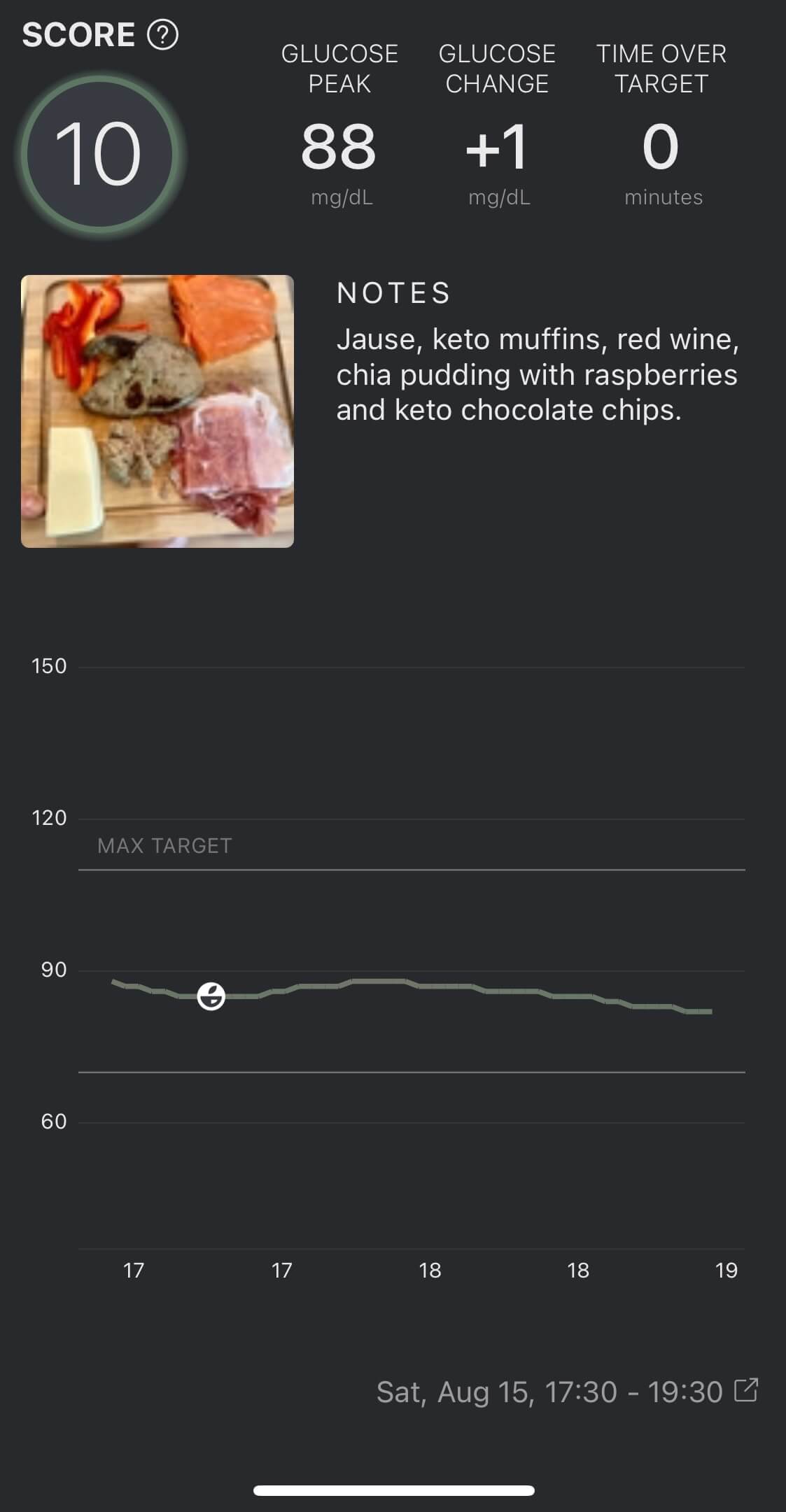
The other important thing that I learned is that a glass of organic red wine after dinner has no impact on my blood sugar. That’s great news because I really enjoy my glass of wine in the evening.
About Levels Health
Levels Health is a data science and software company. Their goal is to remove the barriers that currently exist for people who haven’t been diagnosed with diabetes to get access to a continuous blood glucose monitor.
That’s because you need a prescription before you can buy a CGM and many primary care physicians (PCPs) won’t give you one unless you’re already sick. I assume that’s because people with diabetes are usually the ones buying such monitors and the FDA wants patients to work with a healthcare professional to manage their disease.
I was fortunate enough that my PCP ultimately agreed to work with me. Unfortunately, many doctors aren’t as open-minded and won’t help you.
Levels works with doctors and pharmacies that remove all of those hurdles. Once you’ve signed up, they’ll issue a prescription for you and send you the necessary sensors. That way, you don’t have to worry about dealing with red tape.
In addition to the sensor hardware, Levels also provides a mobile app that allows you to conveniently record meals by snapping a photo, taking notes or adding or importing workouts.
The Levels Health app then correlates all of that data with changes in your blood glucose levels. At the end of the day, you get a personalized metabolic fitness score that you can track and improve over time.
Frequently Asked Questions
Assuming that you have a valid RX from your doctor, you can purchase a CGM at any pharmacy. Alternatively, you can sign up with Levels Health and let them take care of all the paperwork.
If you buy the Freestyle Libre system from Abbott without insurance, it’ll cost you $99 for the optional scanner and about $80 for each sensor, plus whatever you pay for your doctor. If you sign up with Levels Health, the initial fee is $399, which includes access to the reporting platform, the app and two sensors.
Any additional sensors cost $199 for a set of two.
Each sensor only lasts 14 days before it expires. That’s why I recommend getting at least two.
Yes, I believe knowing your blood sugar levels is more important than knowing your ketone levels. Once you’re in ketosis and you know how it feels, it’s all about managing blood sugar.
That’s because if you’re metabolically healthy and your blood glucose is low, your insulin is low as well. If your insulin is low, your ketone levels are high and vice versa.
As a result, if you keep your glucose levels low, you don’t have to worry much about ketone levels.
While there is no direct relationship between these two health markers, consistently high blood sugar causes inflammation and can damage the organs and systems that are responsible for maintaining healthy blood pressure levels, such as the blood vessels and kidneys.
Yes, do you need a prescription from your primary care provider (unless you sign up with Levels Health).
Technically, you can. However, many PCPs are reluctant to issue one because they don’t understand the value of proactive blood sugar monitoring.
The best and most efficient way to lose weight and burn fat is to restrict your carbohydrate intake. If you’re metabolically healthy and you don’t eat carbs that convert to glucose, your body will automatically tap into its own fat stores for energy between meals and while you’re sleeping.
A CGM is an excellent and minimally-invasive tool for ensuring that the food you eat doesn’t convert into glucose at rates that would prevent your body from starting to burn fat.
Diet, exercise and sleep are the three most important factors when it comes to supporting your immune system. A diet that’s high in (processed) carbs fuels inflammatory processes that your immune system has to fight. As a result, your body has fewer resources to fight acute infections, such as viral infections.
The fitter and better-working your metabolism is, the more resources your immune system has to do its job. Since I started with a ketogenic paleo diet and intermittent fasting a few years ago, I have not gotten sick.
I know that’s anecdotal evidence, but I also know that I used to get sick a lot before and now I don’t. Something has changed, and I like to think my lifestyle has something to do with it.
Why You Should Wear a Continuous Glucose Monitor

From a metabolic perspective, we don’t all react to different foods the same way. So you have to consider the personalized nature of nutrition, differences in metabolic rate, etc.
Timing is also important. Eating carbs right after a strenuous workout that depleted your glycogen stores impacts your metabolism differently than eating carbs on a rest day or on an empty stomach.
However, I strongly believe that there are general guidelines when it comes to nutrition that we shouldn’t lose sight of.
If you follow a diet that’s high in fat, low in carbs, and that consists of pasture-raised meats, wild-caught seafood, saturated and monounsaturated fats and a few organic veggies, and excludes grains, legumes, seed oils and processed carbs, you’ll be alright.
That’s why I follow a ketogenic paleo diet. And every metabolic fitness test I’ve done so far confirms that I’m on the right path.
An optimally-functioning metabolism has numerous health benefits because it decreases the risk of developing a metabolic disease, positively influences gene expression and supports your physical fitness and mental health.
I used to be a professional athlete in my early 20s, and I considered myself “pretty fit.” Now I’m over 40 and I’m in the best shape of my life. I’m stronger than I’ve ever been, my aerobic fitness is top-notch, and I just feel great.
In addition to regular exercise and sleep hygiene, I attribute much of my overall health to my focus on metabolic fitness. Wearing a continuous glucose monitor has helped me confirm that I’m on the right path, and I would highly encourage you to wear a CGM for a few weeks and find out whether or not your diet is helping or hurting your metabolic health and flexibility.

Michael Kummer is a healthy living enthusiast and CrossFit athlete whose goal is to help people achieve optimal health by bridging the gap between ancestral living and the demands of modern society.
Medical Disclaimer
The information shared on this blog is for educational purposes only, is not a substitute for the advice of medical doctors or registered dieticians (which we are not) and should not be used to prevent, diagnose, or treat any condition. Consult with a physician before starting a fitness regimen, adding supplements to your diet, or making other changes that may affect your medications, treatment plan or overall health. MichaelKummer.com and its owner MK Media Group, LLC are not liable for how you use and implement the information shared here, which is based on the opinions of the authors formed after engaging in personal use and research. We recommend products, services, or programs and are sometimes compensated for doing so as affiliates. Please read our Terms and Conditions for further information, including our privacy policy.
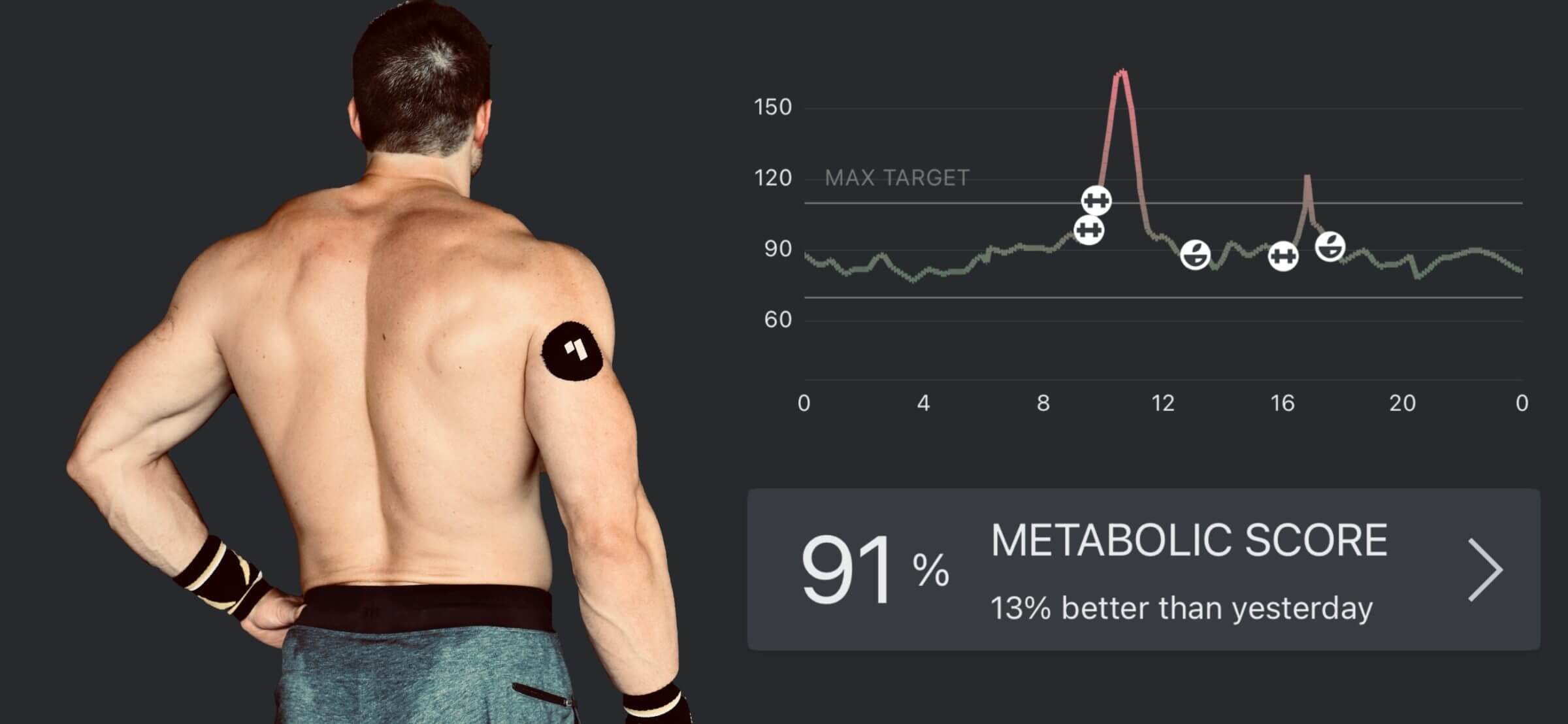

Don’t use diabetic supplies that you do not need to survive. Live your life and enjoy being a normal, healthy, functioning adult. Don’t worry, Not experimenting with a cgm will not bring your 8 pack down to a 6 pack.
-every single diabetic on planet earth.
I’m not sure I understand what you’re trying to say :)
I have noticed on fasting for >24hrs on several occasions my lumen levels hit 5 and blood glucose 6.3mmol/l.
Lumen would say this means my body is stressed and I am converting muscle into glucose via gluconeogenesis and I need to break the fast.
Would you agree ?
Can gluconeogenesis result from mobilising fatty acids ?
Hi Luke,
Certain cells in your body require glucose and if that doesn’t come from the food you eat, your body can use amino acids (from damaged cells/proteins and muscle tissue) and convert them into glucose (via gluconeogenesis).
However, based on all of the research I’ve seen, healthy muscle tissue doesn’t get broken down until day five or so. In other words, if you see transient spikes in blood sugar while fasting for less than five days, I wouldn’t be worried or see that as a sign to end the fast.
Hope that helps!
Cheers,
Michael
I am the kind of person that hesitates to use any new product. The same I felt while giving Nightrider BluCon a try. It is a very good product that helps me have a continuous check on my glucose level and even alarms me when my readings move out of the safe zone so that I can make necessary changes in my eating and exercising habits.